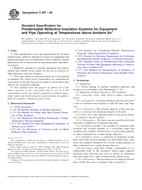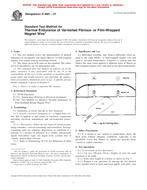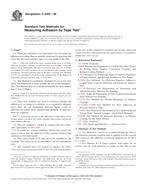1.1 This guide covers a general approach to planning field investigations that is useful for any type of environmental investigation with a primary focus on the subsurface and major factors affecting the surface and subsurface environment. Generally, such investigations should identify and locate, both horizontally and vertically, significant soil and rock masses and ground water conditions present within a given site area and establish the characteristics of the subsurface materials by sampling or in situ testing, or both. The extent of characterization and specific methods used will be determined by the environmental objectives and data quality requirements of the investigation. This guide focuses on field methods for determining site characteristics and collection of samples for further physical and chemical characterization. This guide does not address special considerations required for characterization of karst and fractured rock terrane. In such hydrogeologic settings refer to Quinlan and Guide D 5717, (1).
1.2 This guide refers to ASTM standard methods by which soil, rock, vadose zone, and ground water conditions may be determined. Laboratory testing of soil, rock, and ground-water samples is specified by other ASTM standards which are not specifically discussed in this guide. Laboratory methods for measurement of physical properties relevant to environmental investigations are included in Appendix X1.
1.3 The values stated in SI units are to be regarded as the standard.
1.4 This standard does not purport to address all of the safety concerns, if any, associated with its use. It is the responsibility of the user of this standard to establish appropriate safety and health practices and determine the applicability of regulatory limitations prior to use.
1.5 This guide offers an organized collection of information or a series of options and does not recommend a specific course of action. This document cannot replace education or experience and should be used in conjunction with professional judgment. Not all aspects of this guide may be applicable in all circumstances. This ASTM standard is not intended to represent or replace the standard of care by which the adequacy of a given professional service must be judged, nor should this document be applied without consideration of a project’s many unique aspects. The word “Standard” in the title of this document means only that the document has been approved through the ASTM consensus process.
Product Details
- Published:
- 01/01/2004
- Number of Pages:
- 34
- File Size:
- 1 file , 280 KB
- Redline File Size:
- 2 files , 530 KB


